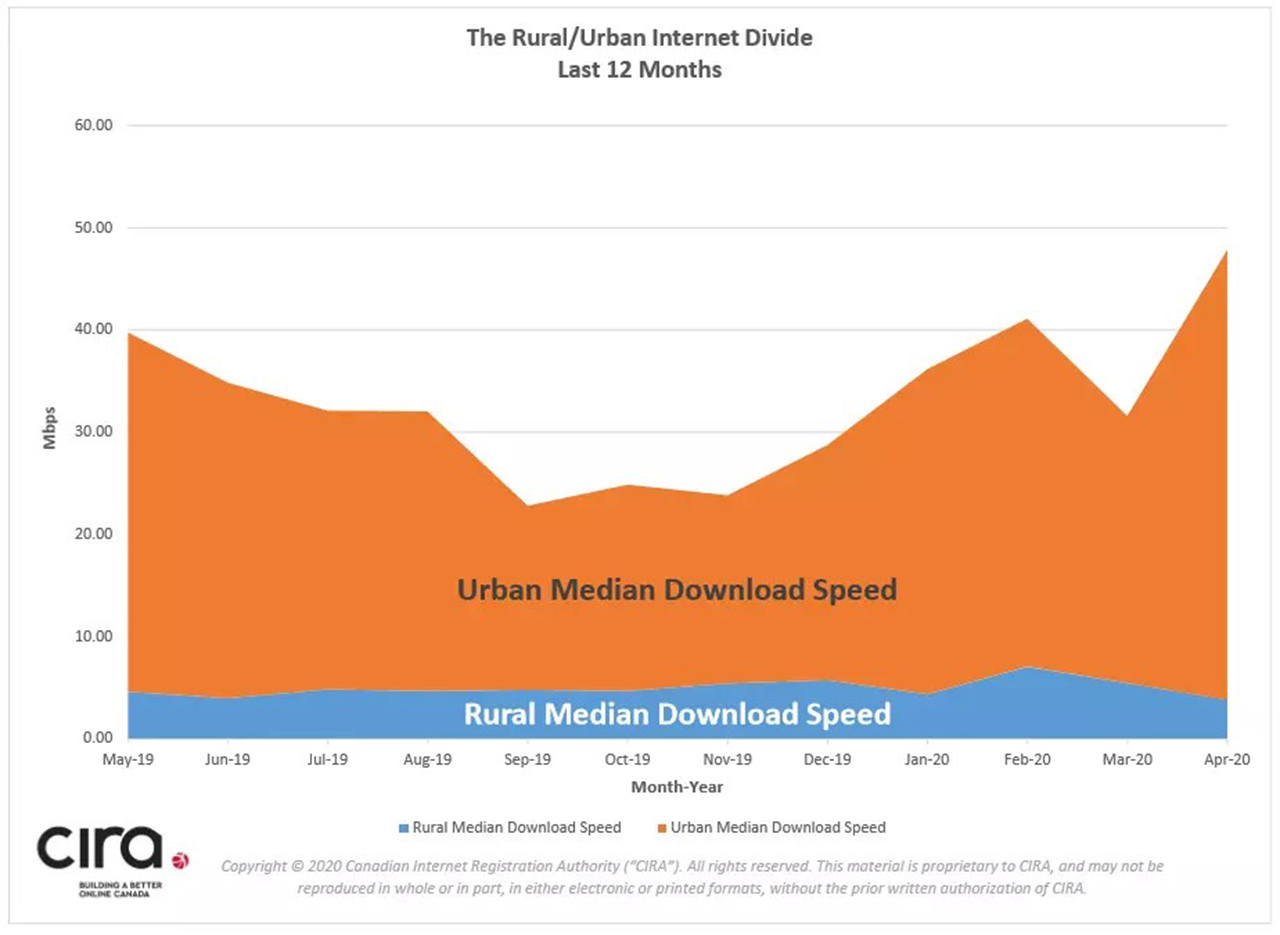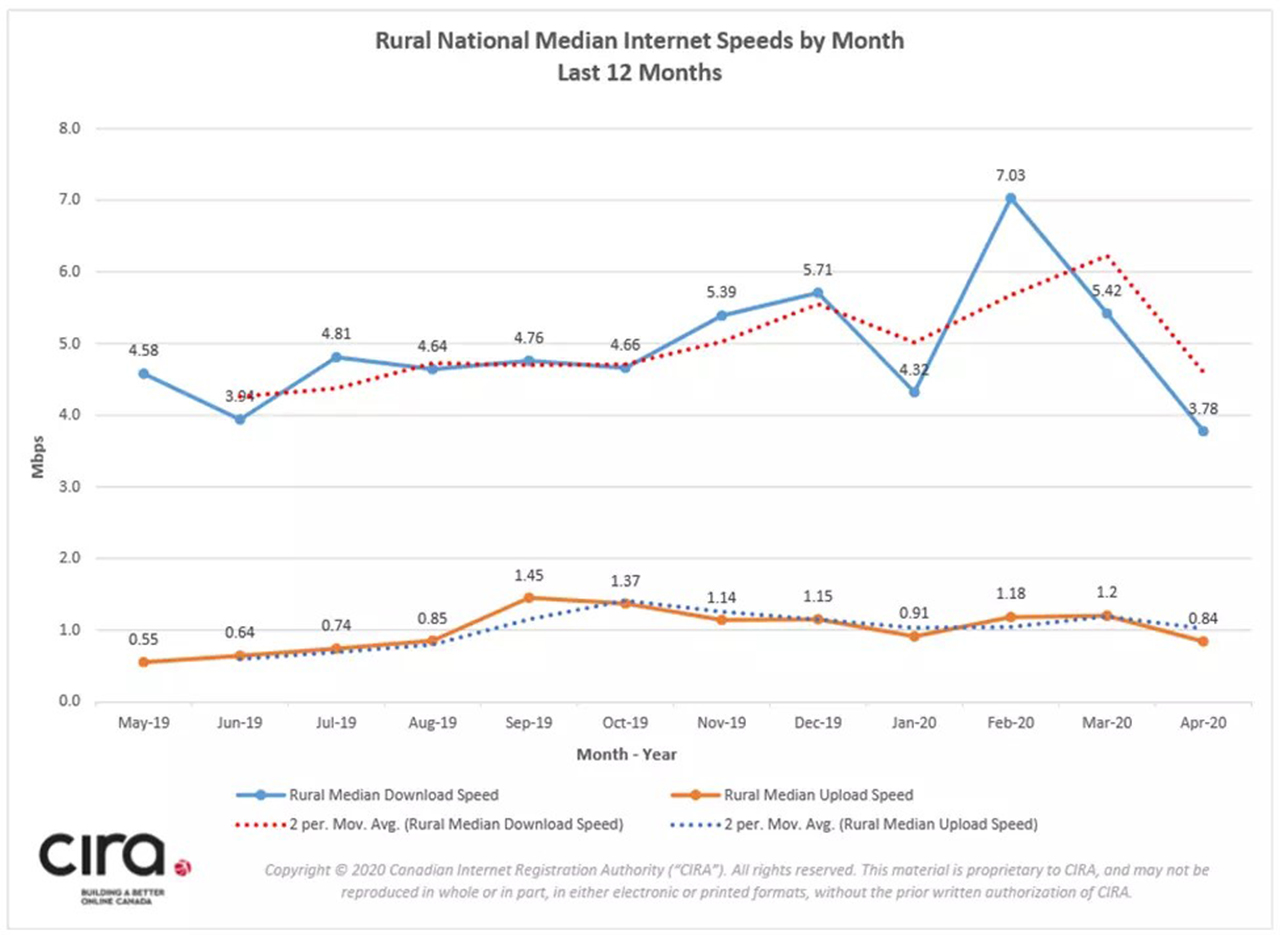
The Canadian Internet Registration Authority (CIRA) released new data about internet speeds in Canada that reveal a concerning delta between urban and rural internet performance.
According to CIRA’s data, rural Canadians experienced nearly 12 times slower download speeds in April compared to urban internet users. Further, CIRA says that rural internet speeds have fallen since the COVID-19 pandemic began while urban users have seen speeds increase.
CIRA measured average download speeds of 3.78Mbps for rural Canadians in April. By comparison, urban Canadians had an average download speed of 44.09Mbps. Further, CIRA says that before the COVID-19 pandemic, typical rural download speeds ranged between 4Mbps and 7Mbps, but those speeds have fallen to the 3.78Mbps average since February.
However, in that same time, urban download speeds increased to the 44.09Mbps average, an annual high. CIRA says this could be because urban customers have more choices in providers and plans and could increase their speeds to compensate for an increase in remote work and people staying home. Rural customers don’t have the same options.

On top of this, rural Canadians experience on average ten times slower upload speeds than urban internet users. Having a fast upload speed can be crucial for things like video conferencing, cloud storage and other tools that have increased in necessity since the pandemic began.
CIRA has submitted the data to the Canadian Radio-television and Telecommunications Commission’s (CRTC) consultation on barriers to rural broadband deployment. Further, the data comes as Rural Economic Development Minister Maryam Monsef said the government plans to accelerate its rural broadband funding during the pandemic.

CIRA partnered with Innovation, Science and Economic Development Canada (ISED) to collect real-world testing data. That data will help the government maximize its investment in rural broadband and identify where the need is greatest.
In the case of this data, results came from CIRA’s Internet Performance Test. Specifically, it’s based on testing data generated between May 2019 and April 2020 from a total of 86,706 urban tests and 31,734 rural tests. The test uses nodes located in internet exchange points in ‘Tier 1 Canadian cities’ instead of within an internet service provider’s (ISP) own network architecture. CIRA says this allows it to measure the actual performance of an internet connection and closely represent the true internet experience of Canadian users.
CIRA says Canadians can help promote faster internet for all by taking CIRA’s Internet Performance Test, available here.
Source: CIRA
MobileSyrup may earn a commission from purchases made via our links, which helps fund the journalism we provide free on our website. These links do not influence our editorial content. Support us here.


